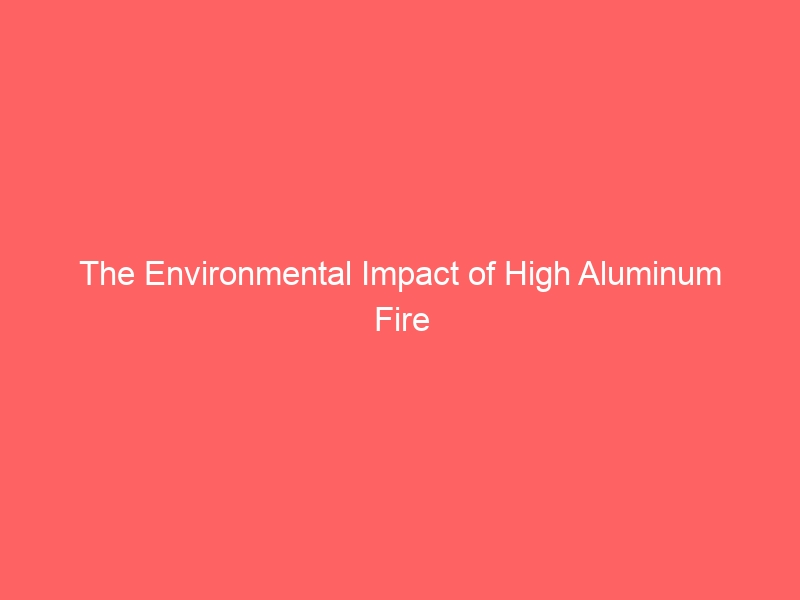Industrial furnaces play a crucial role in various manufacturing processes, from metal smelting to glass-making. However, the high temperatures and harsh conditions inside these furnaces can take a toll on their refractory linings, leading to frequent maintenance and replacement. This not only incurs substantial costs for industries but also has a significant environmental impact due to the disposal of used refractory materials. In recent years, there has been a growing interest in high aluminum fire brick as a sustainable solution for industrial furnaces, with its potential to reduce the environmental footprint associated with traditional refractory materials.
High aluminum fire brick, also known as high alumina brick, is a type of refractory material made from high alumina bauxite clinker as the main raw material, adding the appropriate amount of binding agent and other materials through molding and firing. This results in a brick with high refractoriness, good resistance to acid and alkali slag, and excellent thermal shock resistance – making it ideal for the extreme conditions inside industrial furnaces. But what sets high aluminum fire brick apart from other refractory materials is its environmental sustainability.
One of the most significant environmental benefits of high aluminum fire brick is its extended service life. Traditional refractory linings often require frequent maintenance and replacement due to their inferior performance under high temperatures and corrosive environments. This not only results in increased operational costs but also generates a significant amount of waste. In contrast, high aluminum fire brick can withstand higher temperatures and harsher conditions, leading to fewer replacements and reduced waste generation.
Furthermore, high aluminum fire brick is highly recyclable. When it eventually reaches the end of its service life, it can be crushed and used as an aggregate in new refractory products, reducing the demand for raw materials and minimizing waste going to landfills. This closed-loop recycling process not only conserves natural resources but also reduces the environmental impact of industrial furnace operations.
In addition to its environmental benefits, high aluminum fire brick also offers economic advantages for industries. Its superior performance and extended service life result in lower maintenance and replacement costs, leading to overall cost savings. This makes it a sustainable solution not only from an environmental standpoint but also from a financial perspective.
As the global focus on sustainable manufacturing practices continues to grow, high aluminum fire brick is poised to play a crucial role in reducing the environmental impact of industrial furnaces. Its longevity, recyclability, and superior performance make it an attractive option for industries looking to minimize their environmental footprint while improving their bottom line. By choosing high aluminum fire brick for their refractory linings, industries can not only enhance their operational efficiency but also contribute to a cleaner, more sustainable future.
The Environmental Impact of High Aluminum Fire Brick: A Sustainable Solution for Industrial Furnaces



